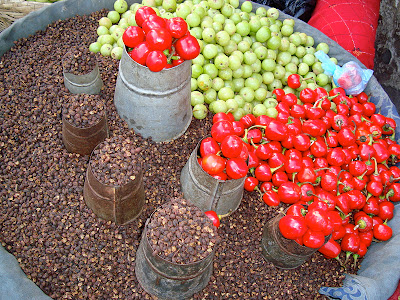Nepal pepper - Szechuan pepper, Sichuan pepper, Chinese pepper, (Z. armatum) - Timmur - (टिम्मुर, तिम्बुर)
Also known as ban timmur or Nepali pepper, this is a highly pungent, sharp tasting dried berry from the prickly ash shrub family. It is often mistaken for black pepper, but has an entirely different flavor and is, in fact, not related to the black pepper family.
Sichuan pepper could also be a spice from the Sichuan cuisine of China's southwestern Sichuan Province. it is a singular aroma and flavor that's neither hot like chili peppers nor pungent like black pepper. Instead, it's slight lemony overtones and creates a tingly numbness within the mouth because of hydroxy-α-sanshool. it's commonly utilized in Sichuanese dishes like mapo doufu and Chongqing hot pot, and is typically added in conjunction with chili peppers to form a flavor known in Mandarin.
Despite its name, Sichuan pepper isn't closely related to either black pepper or the chili pepper. It comes from the seeds of a minimum of two species of small trees within the worldwide Zanthoxylum (colloquially mentioned as "prickly ash") within the Rutaceae , which includes citrus and rue. The husk or hull (pericarp) around the seeds could even be used whole, especially in Sichuan cuisine, and thus the finely ground powder is one of the ingredients for five-spice powder. Related species are utilized within the cuisines of Tibet, Bhutan, Nepal, Thailand, the Konkani and Kumaoni people of India, and thus the Toba Batak of Indonesia.
 |
| When the berry matures, it splits into two halves with a shiny black seed. It has a rough, wrinkled, and uneven surface and the aroma lies in the split covering of the pod, not in the seed. |
 |
| Close-up look of berries with black seeds |
 |
| Timmur is most commonly used spice in Nepali pickles and chutneys. |
 |
| Five different measuring tools (similar to cups) are used here to measure timmur.
Copyright Information
All information on the blog are restricted use under copyright law. You may not re-use words, stories, photographs, or other posted material without the explicit written consent and proper credit to newnepaldream.blogspot.com. If you would like to use any materials here, please contact me.
|


